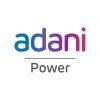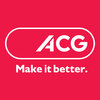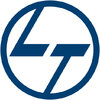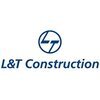Electrical Supervisor
200+ Electrical Supervisor Interview Questions and Answers

Asked in Adani Power

Q. If a motor's rating is 22 kW, what fuse rating should be used?
The fuse rating for a 22 kW motor depends on the starting current and the type of motor.
The starting current of the motor should be considered when selecting the fuse rating.
The type of motor (e.g. induction, synchronous) also affects the fuse rating.
Consult the motor manufacturer's specifications or a qualified electrician for the appropriate fuse rating.
A general rule of thumb is to use a fuse rating of 125% of the motor's full load current.

Asked in Amps Electrical Facility Services

Q. Tell me about HT LT and Dg Transformer, how to do load changeover
HT, LT, and DG transformers are used for power distribution. Load changeover is done by switching between transformers.
HT transformers are used for high voltage distribution, while LT transformers are used for low voltage distribution.
DG transformers are used as backup power sources in case of power outages.
Load changeover is done by switching between transformers based on the power demand.
Proper safety measures must be taken while performing load changeover.
Load changeover c...read more
Electrical Supervisor Interview Questions and Answers for Freshers

Asked in Amps Electrical Facility Services

Q. Tell me what is pac, hvac and ahu full form, their temperature, pressure why use pac in server room
PAC stands for Precision Air Conditioning, HVAC stands for Heating, Ventilation, and Air Conditioning, and AHU stands for Air Handling Unit.
PAC is used in server rooms to maintain a constant temperature and humidity level to protect sensitive equipment.
HVAC is used to control the temperature, humidity, and air quality in buildings.
AHU is a device used to circulate and regulate air as part of a heating, ventilating, and air-conditioning (HVAC) system.
PAC temperature is typical...read more

Asked in Solution System

Q. What are the definitions of Current Transformers (CT) and Potential Transformers (PT), and what are their uses?
CTs and PTs are devices used in electrical systems to measure current and voltage respectively.
Current Transformers (CTs) are used to measure current in electrical circuits by stepping down the current to a safe level for measurement.
Potential Transformers (PTs) are used to measure voltage in electrical circuits by stepping down the voltage to a safe level for measurement.
CTs and PTs are commonly used in power distribution systems to provide accurate measurements for protecti...read more

Asked in Amps Electrical Facility Services

Q. What are the different types of chillers, how do they work, and which thermodynamic cycles do they utilize?
There are two types of chillers: air-cooled and water-cooled. They work on the vapor compression cycle.
Air-cooled chillers use air to cool the refrigerant, while water-cooled chillers use water.
Both types of chillers work on the vapor compression cycle, which involves compressing and expanding refrigerant to remove heat from a space.
Examples of chillers include centrifugal, screw, and absorption chillers.
Centrifugal chillers are commonly used in large commercial buildings, wh...read more

Asked in Tata Projects

Q. Can we run a 3-phase line voltage on a 1-phase system?
Yes, a 3-phase line voltage can be converted to single-phase, but it requires specific methods and considerations.
Using a transformer, you can step down the 3-phase voltage to a single-phase voltage.
Phase conversion can be achieved using a rotary phase converter.
In some cases, you can use two phases of a 3-phase supply to create a single-phase supply.
Example: A 3-phase motor can be run on single-phase power using a phase converter.
Electrical Supervisor Jobs




Asked in Solution System

Q. What is an Air Circuit Breaker (ACB) and how does it operate?
An Air Circuit Breaker (ACB) is a type of circuit breaker that operates by using air as the medium to extinguish the arc formed when the circuit is interrupted.
ACB is designed to protect electrical circuits from overloads and short circuits.
When a fault occurs, the ACB trips and interrupts the flow of current by separating the contacts.
The arc formed during interruption is extinguished by the blast of compressed air.
ACBs are commonly used in industrial applications due to the...read more

Asked in TNT Express

Q. What types of electrical work experience do you have, specifically with repairing hand drills?
I have experience in repairing electrical hand drill machines, focusing on troubleshooting and maintenance.
Conducted routine maintenance on hand drill machines to ensure optimal performance.
Diagnosed electrical issues in machines, leading to timely repairs and reduced downtime.
Replaced faulty components, such as switches and motors, to restore functionality.
Implemented safety protocols during repairs to prevent accidents and ensure compliance.
Share interview questions and help millions of jobseekers 🌟


Asked in Hindustan Petroleum

Q. What are the different types of transformer losses?
Transformer losses refer to the energy losses that occur during the operation of a transformer.
Transformer losses include copper losses and iron losses.
Copper losses occur due to the resistance of the transformer windings.
Iron losses, also known as core losses, occur due to hysteresis and eddy currents in the transformer core.
Copper losses can be minimized by using larger conductor sizes and reducing the resistance of the windings.
Iron losses can be reduced by using high-qual...read more
Asked in Nikhil Comforts

Q. What do you look for when you first receive a drawing for electrical conduit installation in a slab?
I see the layout of the building and plan the conduiting accordingly.
I look for the location of the electrical room and the main distribution panel.
I identify the areas where electrical outlets and switches will be needed.
I plan the conduiting route based on the layout of the building and the electrical requirements.
I consider any obstacles such as beams or columns that may affect the conduiting.
I ensure that the conduiting is installed in compliance with local electrical cod...read more

Asked in TNT Express

Q. Tr oils change vfd mother and tbm machine how's many motor
The question is unclear and lacks proper grammar.
The question seems to be asking about changing the VFD mother and TBM machine oil and the number of motors involved.
However, the question is poorly phrased and lacks clarity.
It is difficult to provide a specific answer without more information or clarification.

Asked in Tata Projects

Q. What are the control and power wiring configurations for star-delta and direct-on-line (DOL) starters?
Star-delta and DOL starters have distinct wiring configurations for controlling motor operations efficiently.
DOL Starter: Directly connects the motor to the power supply, providing full voltage.
Star-Delta Starter: Initially connects the motor in star configuration to reduce voltage, then switches to delta for full power.
DOL is simpler and used for smaller motors (up to 5 HP).
Star-Delta is preferred for larger motors (above 5 HP) to reduce starting current.
Control wiring for D...read more

Asked in Solution System

Q. What is the difference between high tension (HT) and low tension (LT) voltage?
HT voltage is higher than LT voltage. HT is used for long-distance transmission while LT is used for distribution within buildings.
HT voltage is typically above 1000V, while LT voltage is below 1000V.
HT voltage is used for long-distance transmission of electricity, such as from power plants to substations.
LT voltage is used for distribution within buildings or small areas, such as powering appliances and lighting.
HT lines are designed with more insulation and safety measures ...read more

Asked in Nalco water

Q. What is the tan delta test, and what equipment is used for it?
The ten delta test is a diagnostic test used to assess the condition of power transformers.
The ten delta test measures the change in power factor between the initial and final stages of a transformer's life.
It is used to detect insulation deterioration and moisture content in the transformer oil.
Equipment used for the ten delta test includes a power factor test set, a transformer turns ratio tester, and a megohmmeter.

Asked in Tata Projects

Q. How do we find the current in a motor?
Current in a motor can be found using an ammeter.
Connect the ammeter in series with the motor
Turn on the motor and measure the current
Current can be found using the formula I = V/R
Use a clamp meter to measure current without breaking the circuit

Asked in Solution System

Q. What is the difference between Vacuum Circuit Breakers (VCB) and Air Circuit Breakers (ACB)?
VCBs use vacuum as the arc quenching medium while ACBs use air. VCBs are more reliable and require less maintenance.
VCBs use vacuum as the arc quenching medium, while ACBs use air
VCBs are more reliable and require less maintenance compared to ACBs
VCBs have higher breaking capacity than ACBs
VCBs are more suitable for medium voltage applications, while ACBs are commonly used in low voltage applications
Asked in LINC Facility Services

Q. Tell me about your electrical knowledge.
An Electrical Supervisor oversees electrical systems, ensuring safety, compliance, and efficient operation in various projects.
Knowledge of electrical codes and standards (e.g., NEC, IEC) is crucial for compliance.
Experience with troubleshooting electrical systems, such as identifying faults in wiring or equipment.
Familiarity with safety protocols, including lockout/tagout procedures to prevent accidents.
Ability to read and interpret electrical schematics and blueprints for e...read more

Asked in Power Mech Projects

Q. Are all types of contractors in use on the electrical panel?
Electrical panels can be used by various types of contractors.
Electrical contractors are the most common type of contractors who use electrical panels.
General contractors may also use electrical panels for specific projects.
HVAC contractors may require electrical panels for their heating and cooling systems.
Plumbing contractors may need electrical panels for water heaters or pumps.
Fire protection contractors may use electrical panels for fire alarm systems.
Security system con...read more

Asked in Updater Services

Q. What the product you are delivering? What the electrical equipments doing?
We are delivering electrical products and equipment for various industries and applications.
Our products include transformers, switchgear, motors, and control panels.
We provide electrical solutions for industries such as manufacturing, construction, and energy.
Our equipment is responsible for powering machinery, lighting, and other electrical systems.
We ensure that all our products meet safety standards and are installed correctly.
Examples of our work include installing elect...read more
Asked in Nikhil Comforts

Q. What is the process for fixing a modular box in a Mivan sheet for wall conduiting in RCC?
The process of fixing modular box in Mivan sheet for wall conduiting in RCC involves several steps.
First, mark the position of the box on the Mivan sheet.
Then, drill a hole in the Mivan sheet at the marked position.
Insert the modular box into the hole and secure it with screws.
Connect the conduits to the modular box and run them through the RCC wall.
Finally, seal the gap between the modular box and the Mivan sheet with sealant.
Ensure that the box is level and flush with the M...read more

Asked in Microlink Solutions

Q. What is the difference between single-phase and three-phase power?
Single phase and three phase are two types of electrical power distribution systems.
Single phase has one live conductor and one neutral conductor, while three phase has three live conductors and one neutral conductor.
Single phase is commonly used in residential applications, while three phase is used in industrial and commercial applications.
Single phase systems provide a lower power capacity compared to three phase systems.
Three phase systems are more efficient and provide a...read more

Asked in Rashmi Metaliks

Q. Why do we use a star-delta starter?
Star delta starter is used to reduce starting current and torque in induction motors.
Reduces starting current and torque in induction motors
Protects motor windings from damage
Increases motor lifespan
Used for high power motors
Commonly used in industries such as oil and gas, mining, and manufacturing

Asked in TNT Express

Q. Nxt which type properly work products and contrston company shield working
The question is unclear and does not make sense.
The question is grammatically incorrect and lacks clarity.
It is difficult to understand what the interviewer is asking.
There is no clear context or topic mentioned in the question.
It is not possible to provide a descriptive answer based on the given question.

Asked in Power Mech Projects

Q. What are the safety components of a transformer?
Transformer safety parts include fuses, circuit breakers, and grounding systems.
Fuses protect against overcurrent and short circuits.
Circuit breakers protect against overloads and faults.
Grounding systems prevent electrical shock and protect equipment.
Other safety parts may include temperature sensors and pressure relief devices.

Asked in Voltage Engineering

Q. Are you experienced in handling all types of LV and HV panel fixing, substation maintenance, and cable joining works?
Yes, I have experience in handling all types of LV HV panel fixing and substation cable joining works.
I have worked on various types of LV HV panels and substation cable joining projects.
I am familiar with the safety protocols and procedures involved in such works.
I have experience in troubleshooting and resolving issues related to panel fixing and cable joining.
I have worked with different types of cables and connectors.
I am well-versed in reading and interpreting electrical...read more

Asked in Deer Smart

Q. Why is lightning protection provided in a cable tray?
Lightning protection is provided in cable tray to prevent damage to electrical equipment and ensure safety.
Lightning protection in cable tray helps divert lightning strikes away from the cables and equipment.
It reduces the risk of electrical surges and voltage spikes caused by lightning.
By providing a path of least resistance, it helps dissipate the electrical energy from lightning strikes.
It protects the cables, preventing them from melting or catching fire due to high curre...read more

Asked in Tata Projects

Q. What are the different types of maintenance and the associated safety rules?
Maintenance types include preventive, corrective, predictive, and condition-based, each with specific safety protocols.
Preventive Maintenance: Regularly scheduled tasks to prevent equipment failure, e.g., routine inspections and part replacements.
Corrective Maintenance: Repairs made after equipment failure, ensuring safety protocols like lockout/tagout are followed during repairs.
Predictive Maintenance: Uses data analysis tools to predict equipment failures, requiring safety ...read more

Asked in Tata Projects

Q. What is a transformer, and what are its types and components along with their descriptions?
A transformer is an electrical device that transfers electrical energy between circuits through electromagnetic induction.
Types of transformers include: Step-up, Step-down, Isolation, and Auto-transformers.
Step-up transformers increase voltage while decreasing current, e.g., used in power plants.
Step-down transformers decrease voltage while increasing current, e.g., used in residential power supply.
Isolation transformers provide electrical isolation between circuits, enhancin...read more

Asked in Tata Projects

Q. How can one assess the health of a motor, and what parameter ranges are typically expected?
Assessing motor health involves monitoring parameters like vibration, temperature, and current to ensure optimal performance.
Vibration analysis: Excessive vibration can indicate misalignment or bearing issues. Typical values are below 0.1 in/sec.
Temperature monitoring: Motors should operate below 80°C. Higher temperatures can signal overload or insulation failure.
Current draw: Compare actual current to rated current. A significant increase may indicate mechanical issues or ov...read more

Asked in Tata Projects

Q. What is troubleshooting, and what is the process involved in it?
Troubleshooting is the systematic process of diagnosing and resolving issues in electrical systems.
Identify the problem: Gather information about the issue, such as symptoms and error messages.
Analyze the system: Review schematics and documentation to understand the system's design and operation.
Test components: Use tools like multimeters to check the functionality of individual components.
Isolate the fault: Narrow down the potential causes by testing different sections of th...read more
Interview Questions of Similar Designations
Interview Experiences of Popular Companies









Reviews
Interviews
Salaries
Users


















